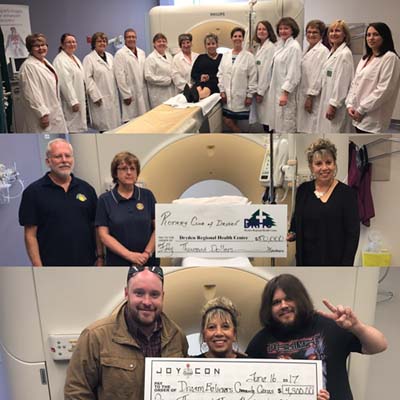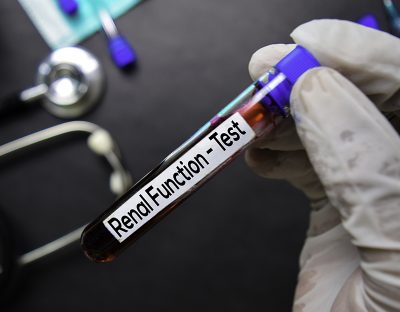- Home
- |
- About
- |
- Patients & Visitors
- |
- Programs & Services
- |
- Careers/Volunteer
- |
- Dryden Regional Health Services Foundation
- |
- News
- |
- Contact
CT Scan
CT uses sophisticated x-ray technology to help detect a variety of diseases and conditions. It generates multiple images of internal organs, bones, soft tissue and blood vessels with greater detail than traditional x-rays.
The department has a state-of-the art Phillips 128 slice CT scanner. These images are sent electronically to the Radiologists via the PACS system.

How do I prepare for a CT scan?
Depending on the type of scan that you will be having, you may need to receive an injection of contrast media (dye) prior to the scan. If so, you will be required to fast for three hours prior to the test. A small amount of water may be taken if necessary. The technologist will let you know whether you must fast when they call with the appointment.
Seafood Allergy or previous reaction to contrast media?
- People who have allergies to seafood must notify the technologist. Some patients may require pre-medication or may not be able to have the injectable dye. They can still have the CT scan.
- Patients who have had a previous reaction to contrast media, such as hives or difficulty breathing, must also inform the technologist.
I take Metformin to control diabetes: what are the precautions after the procedure?
- Patients taking Metformin need to take additional precautions after their procedure. It is possible for dye injected during the procedure to affect the function of your kidneys. Do not take your Metformin for three days starting on the day of the procedure.
- Watch your voiding pattern for three days. If your voiding pattern changes from your normal routine, contact your family physician.
- Monitor your blood glucose level four times a day until it return to normal. It may be higher than your normal because of the procedure and related stress. If your blood glucose reading is >15, seek medical advice immediately.
- Increase your intake of non-carbohydrate containing fluids (water, tea, coffee, diet soft drinks, artificially sweetened crystal drinks) to assist in flushing the dye that was injected during the procedure from your system.
- Your physician will arrange to have a blood test done three days after the procedure to assess your kidney function. The results of the test will determine when you can restart the Metformin.
- If you have any concerns call your family doctor, specialist or the emergency department. You may also contact Telehealth Ontario at 1-866-797-0000 at any time for access to a registered nurse to answer your questions.
Renal protection guidelines for Patients with diabetes mellitus and pre-existing renal insufficiency requiring radiographic contrast material:

- It is possible for dye injected during the procedure to affect the function of your kidneys.
- Patient with diabetes and pre-existing renal insufficiency are at greatest risk of suffering from contrast induced nephropathy (CIN). These guidelines are provided to Patients with a high serum creatinine and low estimated glomerular filtration rate (GFR) to reduce the risk of damage to your kidneys.
- Watch your voiding pattern for three days. If your voiding pattern changes from your normal routine, contact your family physician.
- Increase your intake of non-carbohydrate containing fluids (water, tea, coffee, diet soft drinks, artificially sweetened crystal drinks) to assist in flushing your system of the dye that has been injected during the procedure.
- Your physician will arrange to have a blood test done two days after your procedure to assess your kidney function.
- If you have any concerns call your family doctor, specialist or the emergency department. You may also contact Telehealth Ontario at 1-866-797-0000 at any time for access to a registered nurse to answer your questions.
Intravenous contrast: what should I know about taking intravenous contrast?
- Certain exams require a special dye, called contrast agent or contrast medium, to be delivered into the body before the test starts. Contrast medium helps certain areas show up better on the x-rays and is used to provide more information to diagnose or evaluate your condition. If you have a known allergy to contrast material, or "dye," tell the technologist. You may need to take medications before the test in order to safely receive this substance.
- The contrast is a clear fluid that may be administered by the technologist or a nurse through an intravenous needle in the vein of your forearm or hand.
- It may be given through the rectum using an enema.
- You might drink the contrast before your scan. Whether you actually drink the contrast depends on the type of exam being done. The contrast liquid may taste chalky, although some are flavored to make it taste a little better. The contrast eventually passes out of your body through your stools.
- If contrast is used, you may also be asked not to eat or drink anything for 4-6 hours before the test.
- Before receiving the contrast, tell your health care provider if you take the diabetes medication metformin (Glucophage) because you may need to take extra precautions.
- Drink plenty of fluid after having your CT scan to help flush the contrast from your system. It is normally cleared from your body within 24 hours.
- Reactions: Most people have this type of examination without any complication. However, mild allergic reactions to the contrast occur in about 1-3% of patients and may include itching, sneezing or hive. These reactions may pass without treatment or respond quickly to medication. Less common reactions include slight wheezing and swelling of the eyes. Rarely, more severe allergic reactions can occur: fall in blood pressure, shortness of breath, seizures, kidney damage and in extremely rare instances, even death.
- Usually reactions occur immediately after injection. However, in some instances they may occur up to 7 days after injection. If this happens, go to your Emergency Department and tell the physician that you have had x-ray dye.
BP.O. Box 3003, 58 Goodall Street, Dryden, Ontario, Canada, P8N 2Z6 Apatientrelations@drhc.on.ca x807-223-8200 TTY807-223-8295 * ^
Contact Us
P.O. Box 3003, 58 Goodall Street
Dryden, Ontario, Canada, P8N 2Z6
x807-223-8200 TTY807-223-8295
Apatientrelations@drhc.on.ca

